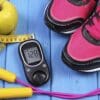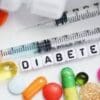Managing Low Blood Sugar Levels During Exercise: A Guide for the Indian Population
Introduction:
Maintaining a healthy lifestyle is crucial for overall well-being, and regular exercise is an integral part of that journey. However, for individuals with fluctuating blood sugar levels, managing their sugar levels during physical activity can be challenging. In this article, we will explore the reasons behind blood sugar drops during exercise and provide valuable tips to help you tackle this issue effectively. To assist you further, we recommend using the Fitpaa app, designed specifically to address health and fitness goals for the Indian population.
Understanding Blood Sugar Drops During Exercise:
1. The Impact of Exercise on Blood Sugar Levels:
– Exercise plays a vital role in managing blood sugar levels by increasing insulin sensitivity and improving glucose utilization by muscle cells.
– However, engaging in intense or prolonged physical activity can cause a drop in blood sugar levels, especially for individuals with diabetes or insulin resistance.
2. Common Causes of Low Blood Sugar Levels During Exercise:
– Delayed meal or snack consumption prior to exercise
– Over-administration of insulin or medication
– Inadequate carbohydrate intake before or during exercise
– High-intensity workouts that rapidly deplete glucose stores
– Improper diabetes management strategies during exercise
Managing Low Blood Sugar Levels During Exercise:
1. Consult Your Healthcare Provider:
– Before starting any exercise regimen, consult with your healthcare provider to discuss your specific conditions and develop an exercise plan that suits your needs.
2. Monitor Your Blood Sugar Levels:
– Regularly monitor your blood sugar levels before, during, and after exercise to understand your body’s response to physical activity.
– Use a reliable glucometer to obtain accurate readings.
3. Pre-Exercise Preparations:
– Consume a balanced meal or snack containing complex carbohydrates, lean protein, and healthy fats at least 1-2 hours before exercise.
– If necessary, consult with a nutritionist to create a personalized meal plan that suits your dietary needs and exercise goals.
4. Adequate Hydration:
– Maintain proper hydration before, during, and after exercise to support optimal blood sugar regulation.
– Drink water and electrolyte-rich fluids to replace lost fluids during sweating.
5. Adjust Medication and Insulin Dosages:
– Consult with your healthcare provider to determine if adjustments to your medication or insulin dosage are necessary during exercise.
– It may be advisable to reduce the dosage or timing of certain medications to avoid hypoglycemia.
6. Carbohydrate Consumption:
– Consume easily digestible carbohydrates before and during exercise to provide a steady source of glucose.
– Examples include fruits, energy gels, whole grain snacks, or glucose tablets.
– Aim for approximately 15-30 grams of carbohydrates every 30-60 minutes during prolonged exercise sessions.
7. Carry Quick-Acting Sugar Sources:
– Always carry easily accessible sources of quick-acting carbohydrates like glucose tablets, fruit juice boxes, or glucose gel for emergencies when blood sugar levels drop rapidly.
8. Wear Identification or Alerting Devices:
– For individuals with diabetes, wearing identification or alerting devices, such as medical bracelets or necklaces, can help first responders provide appropriate care during emergencies.
Using Fitpaa App for Managing Blood Sugar Levels During Exercise:
– The Fitpaa app offers a comprehensive platform designed to help Indian users achieve their health and fitness goals effectively.
– The app provides personalized guidance and support from nutritionists, fitness coaches, and doctors who specialize in managing diabetes and other health conditions.
– Fitpaa’s intelligent technology incorporates real-time monitoring, metabolic assessment, and guidance to optimize your exercise routine, nutrition, and overall well-being.
– With features like a smart workout trainer, precision diet tracker, and performance tracking, the Fitpaa app becomes an essential tool in managing blood sugar levels during exercise.
Conclusion:
Ensuring optimal blood sugar levels during exercise is vital for individuals with diabetes or insulin resistance. With proper planning, close monitoring, and support from healthcare professionals, managing low blood sugar levels can be effectively achieved. To simplify and enhance your fitness journey, we recommend downloading the Fitpaa app. With its user-friendly interface, expert support, and tailored guidance, the Fitpaa app will help you progress towards your health and fitness goals while managing blood sugar levels efficiently. Take charge of your health and embrace a healthier, fitter life with Fitpaa!
Remember, before making any changes to your exercise routine or diabetes management, always consult with your healthcare provider for personalized advice and guidance.









